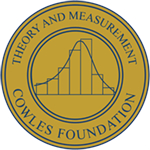Document Type
Discussion Paper
Publication Date
10-20-2020
CFDP Number
2260R
CFDP Revision Date
01-13-2021
CFDP Pages
44
Journal of Economic Literature (JEL) Code(s)
E1, E3
Abstract
Nine U.S. recessions and three expansions are analyzed in this paper using a structural macroeconometric model. With two exceptions and one partial exception, the episodes are predicted well by the model, including the 2008-2009 recession, conditional on the actual values of the exogenous variables. The main exogenous variables are stock prices, housing prices, import prices, exports, and exogenous government policy variables. Monetary policy is endogenous. Fluctuations in stock and housing prices (housing prices after 1995) are important drivers of output fluctuations—large wealth effects on household expenditures. In explaining the 2008-2009 recession detailed financial variables such as credit-constraint variables are not needed for the aggregate predictions. The sluggish recovery after the 2008-2009 recession is explained in large part by sluggish government spending. There is no evidence of secular stagnation.
Recommended Citation
Fair, Ray C., "Analysis of Nine U.S. Recessions and Three Expansions" (2020). Cowles Foundation Discussion Papers. 2591.
https://elischolar.library.yale.edu/cowles-discussion-paper-series/2591


